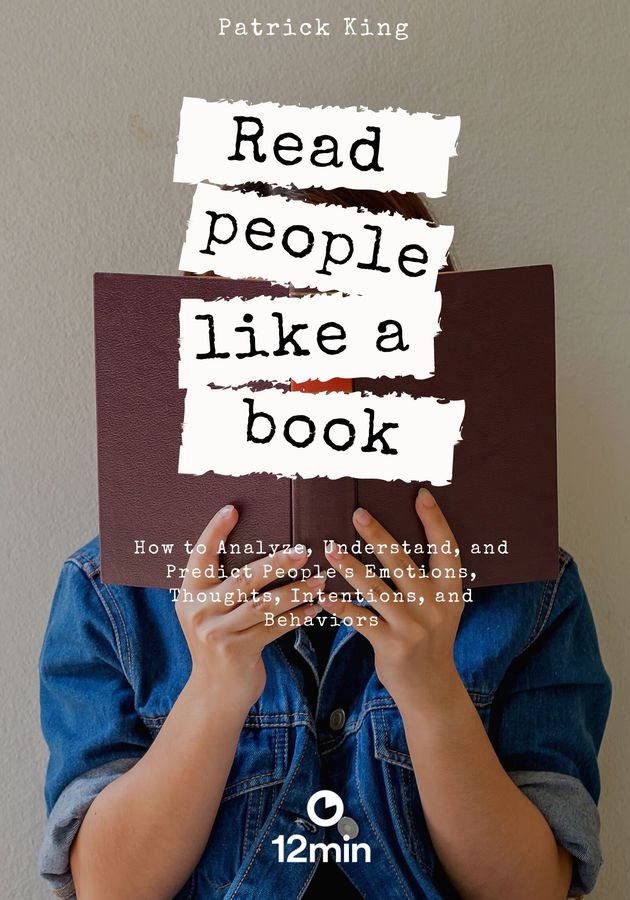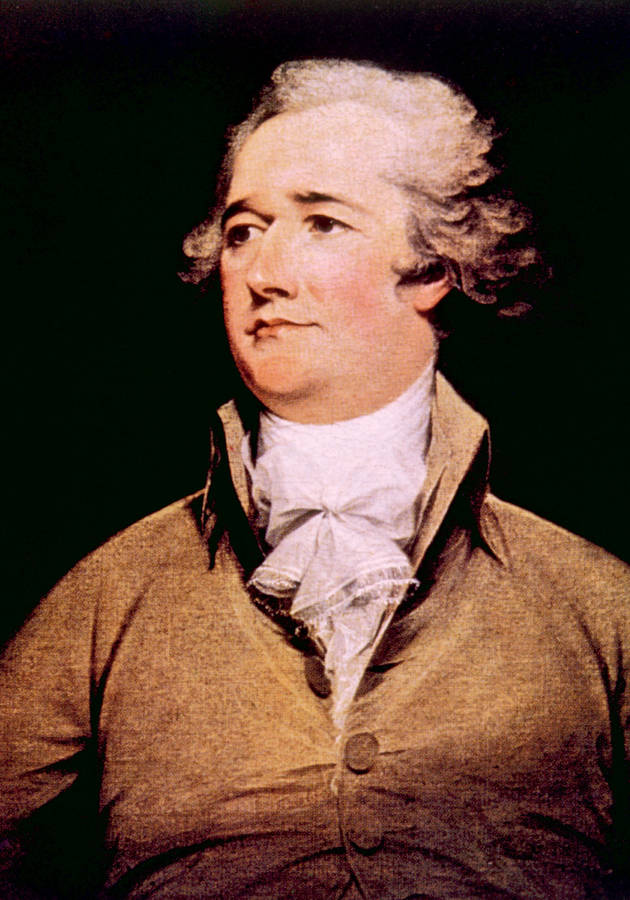Some people seem to have a natural gift for getting other people. “The truth is,” writes conversation coach Patrick King, “that this ability is not really anything mystical, but a skill like any other that can actually be learned and mastered.” To prove this, in his comprehensive and insightful analysis of human behavior “Read People Like a Book” – hailed by some as a modern-day counterpart to Dale Carnegie’s classic “How to Win Friends and Influence People” – he looks closely at all the ways one can develop the valuable skill of analyzing and understanding other people’s emotions, thoughts and intentions. So, get ready to learn how to become a brilliant people-reader yourself!
What you’re doing wrong
Almost all people feel they are much better judges of character than they actually are. Hence, all that pain and hurt in the world. Just think about it. How many times have you heard someone who’s supposedly “good with people” complain about the fact that their ex turned out to be a real jerk in the end? If they had actually been good judges of character, shouldn’t they have known that from the start? After all, characters rarely change in a few weeks or months. It is fairly easy to talk about how “all of the signs were there” after the fact; noticing them beforehand is what King’s book is all about.
There are many reasons why we are much inferior judges of character than we believe to be. The main one is that we are biased creatures, that is to say, we are programmed to instinctively believe that some things are truer than others. This is because our brain is actually a survival mechanism, not a tool for detecting the truth. On the flipside, for this very same reason, reading other people is possible. So, before you can do that, become a self-reader first. “We become great people-readers when we understand ourselves,” writes King. “We need to know what biases, expectations, values, and unconscious drives we bring to the table so we are able to see things as neutrally and objectively as possible.”
In addition to our inherent lack of objectivity, another reason why we are naturally bad at judging other people’s character is our tendency to look for general, rather than context-dependent signs. In other words, unless you know how someone is with other people, you won’t know if you’re noticing a deviation in their behavior or just their normal baseline. That’s why reading articles such as “5 Telltale Signs Someone Likes You” is rather futile. For example, a heartfelt smile or even an arm touch needn’t be a smile if the person is like that with other people as well. “Analysis can only happen with data, not a single datum,” remarks King. Indeed, in any real analysis, we needn’t be looking for signs, but for patterns.
Motivation as a behavioral predictor
Ever since Ancient Rome, one of the first questions investigators ask when they try to identify crime suspects is “Cui bono?” – “To whom is it a benefit?” Indeed, unless there’s an obvious motive, it’s difficult to pin a crime on a person for the simple reason that whatever we do, we do it with some definite objective in mind. Hence, understanding what motivates people in general is a good starting point if you want to learn how to read people better in particular. To quote King, “If you can zoom in and really grasp a person’s true motivations, you can understand them so much better, perhaps even to the point of being able to predict how they might act in the future.” Fortunately, there are a few universal models of motivation that can give you a helpful framework. Here are the three most prominent.
- The pleasure principle. Originally conceived by Aristotle in Ancient Athens and popularized by Sigmund Freud at the turn of the century, the pleasure principle asserts that the reptile part of the human brain does everything it can to seek out pleasure and avoid pain. This simple rule should help you understand everyone much better. Every time you’re wondering about the reason behind someone’s action, ask yourself what is the pain they are trying to avoid and/or the pleasure they are seeking. Integrate in your thinking the following two rules of thumb: 1) in general, people work harder to avoid pain than to get pleasure; and 2) people’s perceptions of pleasure and pain are more powerful drivers than the actual things.
- The pyramid of needs. Originally proposed by Abraham Maslow in 1943, his hierarchy of needs is arguably the most famous behavioral motivation model in the history of psychology. It argues that, at various points in our lives, we all seek similar types of needs which can be best represented as a five-level pyramid, with the more basic needs at the bottom. The higher needs can partake in our intrinsic motivation only when the more basic needs have been met. The levels of Maslow’s hierarchy are as follows: physiological fulfillment, safety, love and belonging, self-esteem, and self-actualization. So, look for both
- Defense of the ego. Even though unconscious, this is one of our most powerful motivators. Simply put, we often try to guard our ego from anything that would make us feel psychologically less; in doing so, we tend to bend reality and even lie to ourselves to the point of not being able to accept the truth. There are many defense mechanisms our ego uses to shield itself from the truth. Some of them are denial, rationalization, projection, sublimation, regression, displacement, repression, and reaction formation. It’s important to note here that when the ego is in play, it can take front stage over other motivations. So, take that into consideration when you are analyzing the reason why somebody has done something or not done something else.
The body, the face, and clusters
Not only do actions speak louder than words, they also seem to speak far more often. According to some studies, only about 7% of our communication comes from the actual spoken word, whereas a whopping 55% of it stems from facial expressions and body language. Hence, it is not an exaggeration to say that when it comes to reading people, using your eyes will help you much more than using your ears. But then again, you must know how to use them, that is to say, what to look at and what to look for in other people. Here are some basics.
- Facial expressions. We use two types of facial expressions: micro- and macroexpressions. Macroexpressions are not only “larger, slower, and more obvious” but also consciously created, and thereby more routinely faked. Microexpressions, however, are “incredibly quick, almost unperceivable, and unconscious;” hence, they are the actual telltale signs you are looking for. American psychologist Paul Ekman is a pioneer in the study of microexpressions. He has identified six universal human emotions – happiness, sadness, disgust, fear, surprise and anger – and concluded that all of them come with corresponding minuscule facial expressions. Many of his books describe these microexpressions, so the next time you go to the library, be sure to look for Paul Ekman’s works.
- Body language. Much like the language of our face, the language of our body is also inbuilt, primitive, emotional and even automatic. As ex-FBI agent Joe Navarro – an authority in the field – has once remarked, the human body can often be “a kind of billboard that advertises what a person is thinking.” For example, when someone is anxious or angry, they unconsciously contract as if trying to conceal their own body; contrariwise, the bodies of relaxed people “expand” and they tend to take up more space. Similarly, rubbing or touching the forehead can signal emotional distress, just as fidgeting with a tie or playing around with a necklace can signal some internal struggle.
Personality science and typology
Personality is usually defined as a characteristic set of behaviors, cognitions, and emotional patterns specific to a single person. In the context of people-reading, it’s even better if we think of personality as “a persistent pattern of behavior over the long term.” Even though no theory of human personality would help you understand a particular person better, almost all of them should help you get a clearer, more general idea of “the fundamental axes on which people differ.” The following few theories are most famous for a reason.
- The Big Five. Dating back to 1949, the Big Five is one of the first attempts by psychologists to classify people based on specific traits rather than as a whole. The Big Five theory reduces people to five traits which you can easily memorize with the acronym OCEAN: 1) openness to experience (propensity to try new things); 2) conscientiousness (being cautious and careful); 3) extroversion (drawing energy from others and social situations); 4) agreeableness (warm and sympathetic); and 5) neuroticism (anxious and high-strung). Each of these traits has two extremes and each person you know can be found somewhere along the spectrum the two form. For example, even though there is no such thing as a pure extrovert or pure introvert, the two terms serve well to designate a certain inclination, a certain penchant. You can’t be neutral.
- The Myers-Briggs Type Indicator (MBTI). The MBTI is one of the most popular introspective self-report questionnaires. It is based on four very distinct dichotomies which you can think of as simply being traits, much like the Big Five. These dichotomies concern your general attitude toward others (introverted/extroverted), the way you perceive information (intuitive/feeling), the way you process information (thinking/feeling), and the way you implement information (perceiving/judging). There are 16 different combinations and, hence, 16 different personality types. As much as it is popular, the MBTI is also flawed. Not only because – much like the horoscope – it stereotypes people into a finite number of types, but also because people get different results if they self-assess in different moods. Even so, getting a general idea of people’s personality types can be helpful if you want to understand a specific person.
- The Keirsey Temperament Sorter (KTS). Closely associated with the MBTI, the KTS is a way of organizing pretty similar information in a different manner. In it, instead of 16 personality types, there are four distinct temperaments, each one coming with two types of roles. The four temperaments are guardian, artisan, idealist, and rational. Guardians can be administrators or conservators, artisans – operators or entertainers, idealists – mentors or advocates, and rationals – coordinators or engineers. According to Keirsey, 4 out of 5 people are either guardians or artisans.
- The Enneagram. The Enneagram, developed by Bolivian psycho-spiritual teacher Oscar Ichazo and the Chilean psychiatrist Claudio Naranjo, is a model of the human psyche which defines nine general types of personalities: reformer, helper, achiever, individualist, investigator, loyalist, enthusiast, challenger, and peacemaker. Each type is composed of a specific set of traits, and in this way, it functions pretty much like Keirsey’s temperaments. It shares the same flaws – it’s simplistic and it can’t be tested on account of vagueness. But when it comes to people-reading, even vague knowledge is better than no knowledge at all.
Lie detection 101
Just like everyone believes they are good drivers or good judges of character, everyone believes they are good at spotting liars as well. However, a 2006 study in the Forensic Examiner found that most people are generally quite bad at detecting liars. Another study published in the same year in the Personality and Social Psychology Review discovered that just 50 in 20.000 people are able to spot a liar more than 80% of the time. That means that a whopping 99.75% of the people are no better at deception detection than mere chance. Indeed, as any FBI agent would tell you, lie detection is quite difficult and it’s not an exact science. That said, there are some general tips that can help you:
- Focus on the conversation. Lies are often more convoluted than the truth. So, be on the lookout for “overly wordy stories that are presented all at once,” as well as for inconsistencies and delays.
- Use the element of surprise. Ask open-ended unexpected questions. The faster they come the more difficult for the liar to conceal the inconsistencies.
- Increase the cognitive load. Be suspicious and drill for details. If a person’s emotion doesn’t match the content of their words – or if they are deliberately stalling for time – then they are probably lying.
- Watch the body. What the words can hide, the body can’t. When lying, people tend to blink more frequently and have more frequent slips of the tongue. Just as well, their pupils dilate and they start showing speech disturbances.
- Sit back and enjoy the story. Sometimes silence is a better lie detector than questioning. So, allow the other person to volunteer information, rather than pulling it out of them. Stay relaxed and casual.
- Trust your gut instinct. It’s not a good idea to make decisions on intuition alone, but don’t rely solely on your conscious mind either. Sometimes, your unconscious mind may pick up some data your conscious mind isn’t aware of.
Using the power of observation
Given enough time, space, and evidence everyone can detect an impostor, be they a mere liar or a charlatan. However, in life, we rarely have enough time to discern baseline behaviors or look for distinctive patterns. More often than not, we are forced to make quick assessments of people’s characters. Here are some techniques to help you with that:
- Thin-slicing. The ability to find patterns in events or people based only on small amounts of data is called thin-slicing. More colloquially, we call this making snap decisions. Psychologists have found that in situations of existential type, they can be surprisingly accurate. So, do trust your initial unconscious reactions (that is to say, your intuition) when there’s no time to supplement it with relevant data. Overanalyzing a person or going against your guts can sometimes lead to serious consequences.
- Look at the words people use. If you have enough time to complement your snap judgment about a person with data, start by looking at the words they use. For example, people who use more evocative phraseology when saying something negative tend to be more neurotic in nature. Conversely, more positive people seldom use words like “disgusting” or phrases such as “sick of.” Using complex terminology when it isn’t explicitly needed means the person is desperate to be perceived as someone smart, and using military or hunting terminology when talking about dating is an unconscious admission of how they really view the opposite sex.
- Be a Sherlock Holmes. You can tell a lot about a person by the way they smile. A “Duchenne” smile is a genuine smile and involves the whole face. A “Pan Am” smile on the other hand appears in the mouth alone. Just as well, clothing can tell you a lot about a person. Lack of care and attention in that department can signal low self-esteem or depression. On the other hand, deliberately chosen markers of status can signal a person who either “fakes it to make it” or doesn’t feel they are competent enough for their societal role. Finally, people’s homes and possessions can be read pretty much like their bodies, since they are extensions of their personality. As a rule of thumb, a welcoming house indicates a sociable person; a neglected room, on the other hand – a neurotic one.
- Active observation. There are many other things that can help you discern what kind of person someone is. For example, their online behavior and the photos they post on Instagram. Are they carefully edited or casual? If the former, do they convey the message of perfectionism forcefully or naturally? What kind of a person would like to present themselves as more perfect than they are? Ask yourself questions such as this and you’ll get a better idea of another person’s personality. Ask them hypothetical questions – such as “what would you do if you got a million dollars” – to get to the bottom of who they are, as well as their secret desires, values and self-perception.
Final notes
“Read People Like a Book” reads less as a standalone self-help book and much more as an encyclopedia of useful concepts. In other words, there are many insightful things you will find here, but not really that many practical techniques. But then again, practice works better when it is founded in theory and “Read People Like a Book” is a great theoretical introduction to the subject of people-reading, not to mention an excellent guide to relevant books and studies.
12min tip
There’s a reason why the first question detectives ask is what the motive was. Indeed, you can understand a lot about a person – their likes and dislikes, their values and their secret desires – if you know why they are doing what they are doing. Because, when it all comes to it, we do most of what we do to either avoid pain or attain pleasure. So, every time you’re wondering about the reason behind someone’s action, ask yourself what is the pain they are trying to avoid and/or the pleasure they are seeking. That question alone will reveal to you a lot about their character.





























